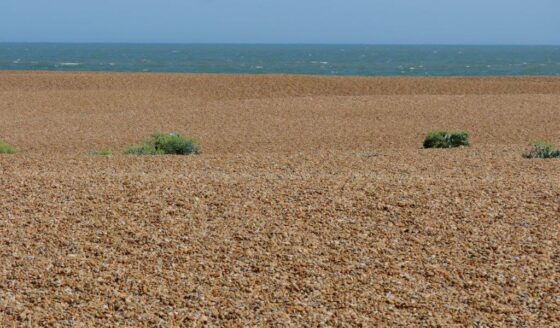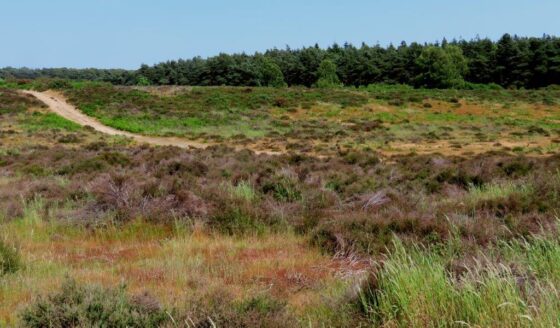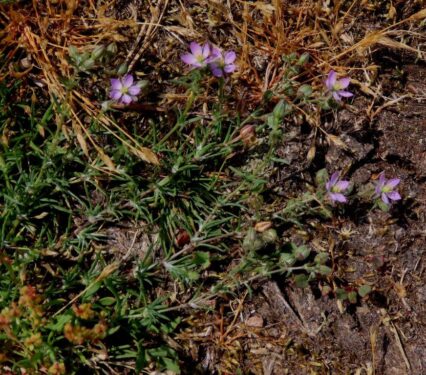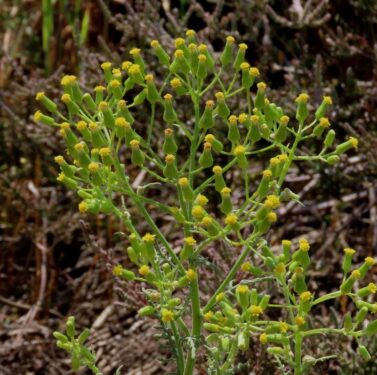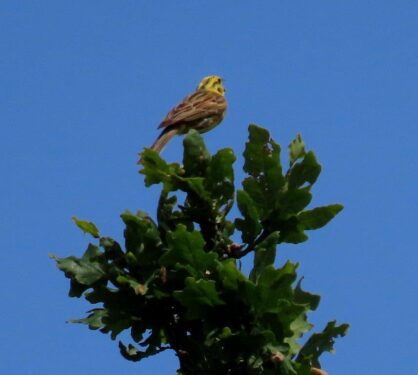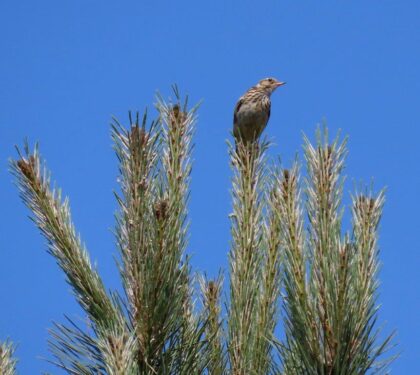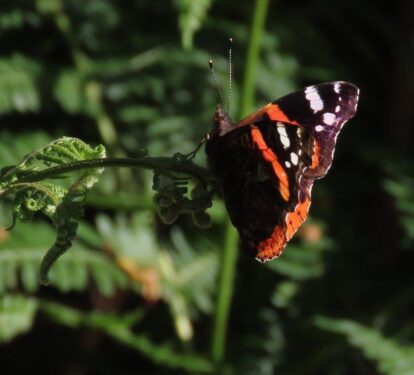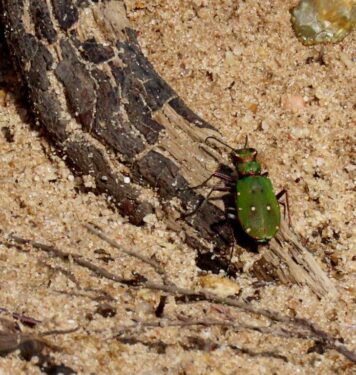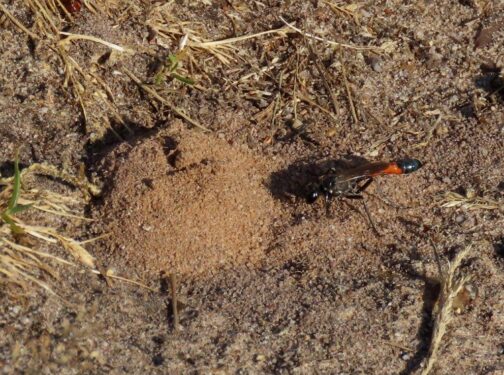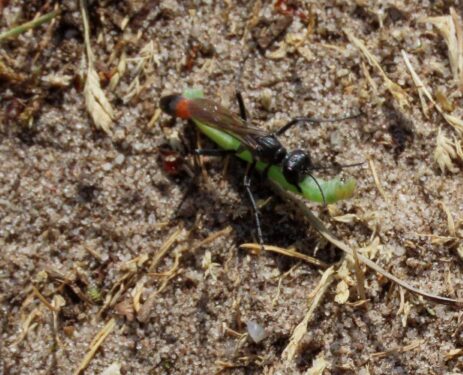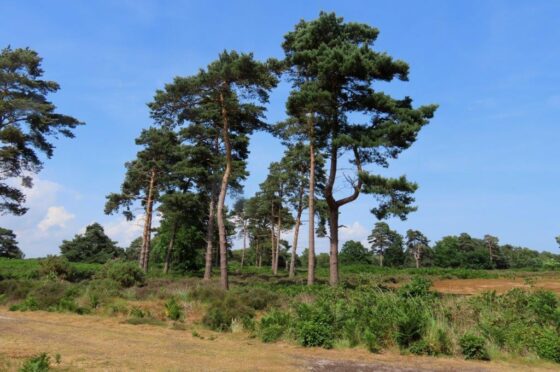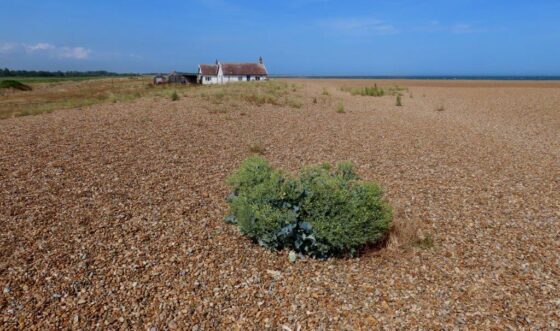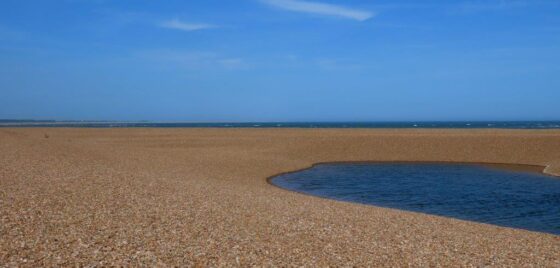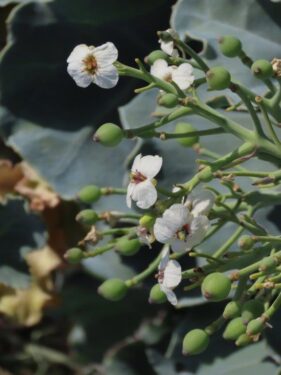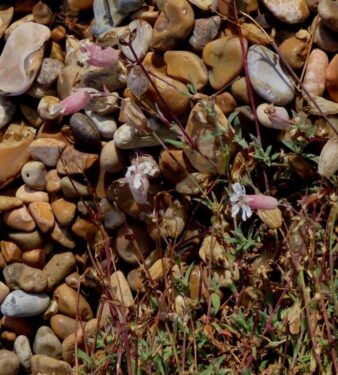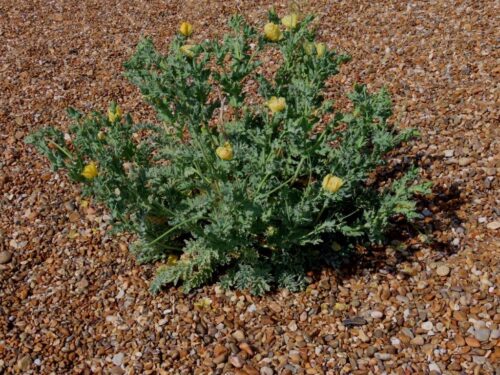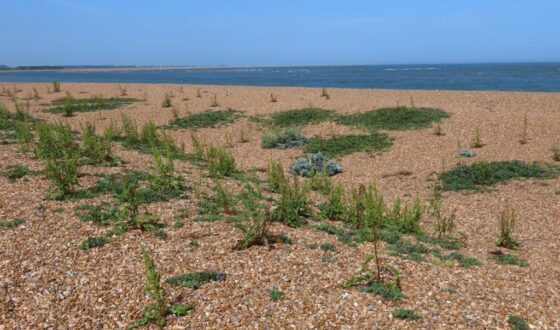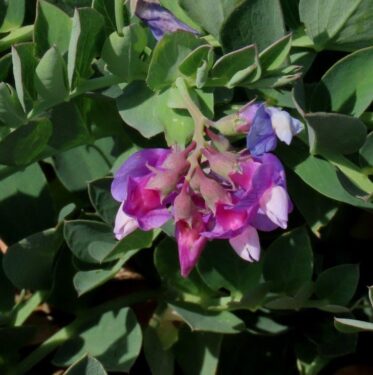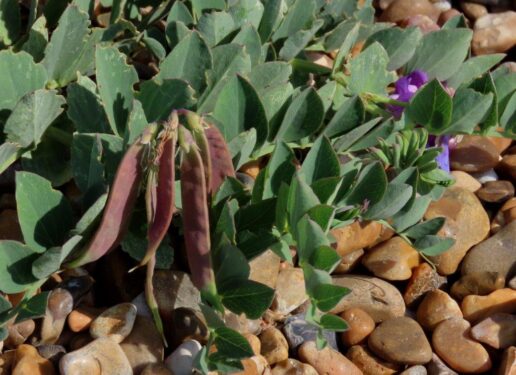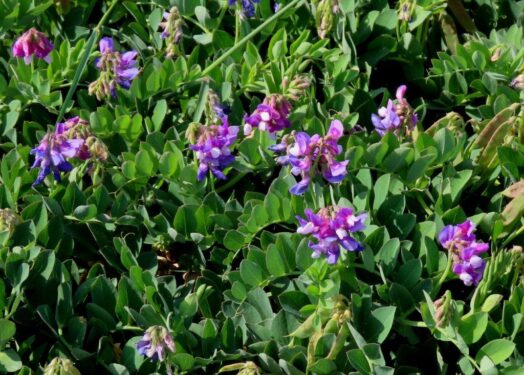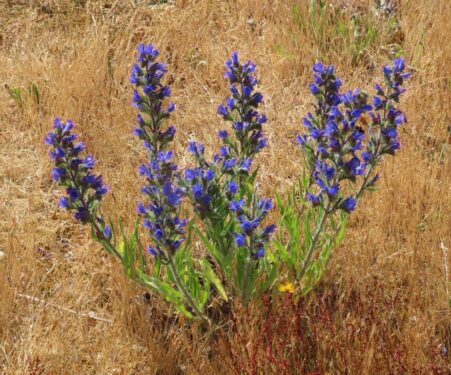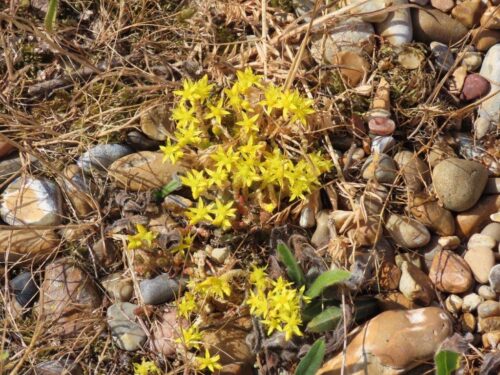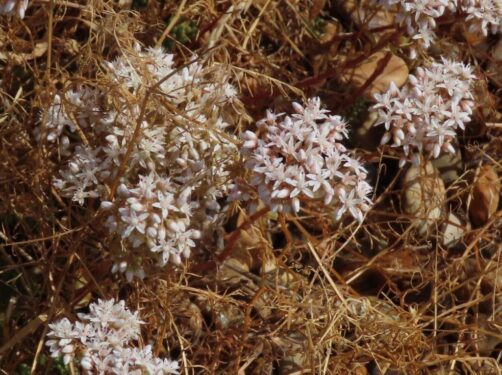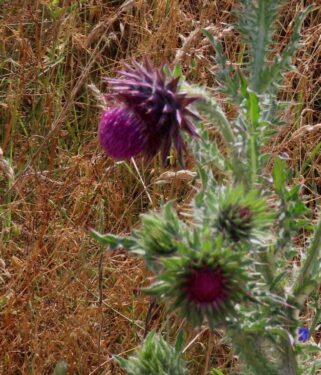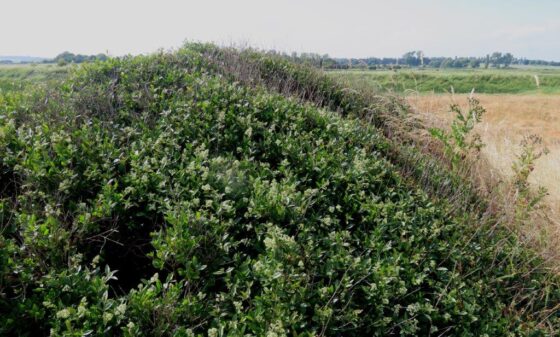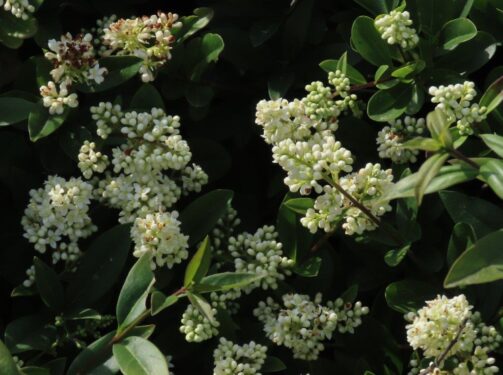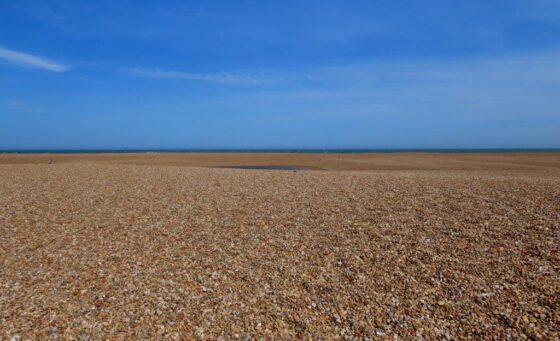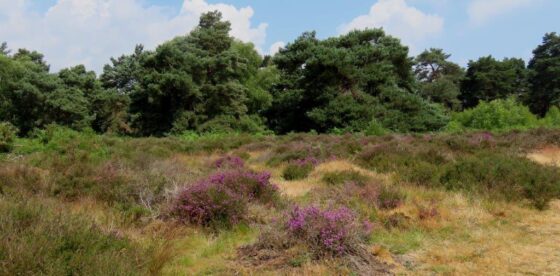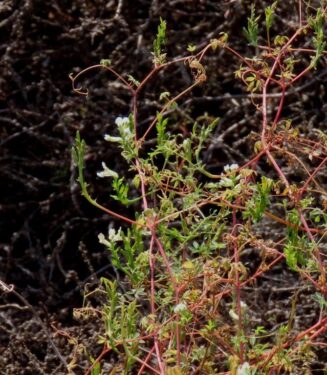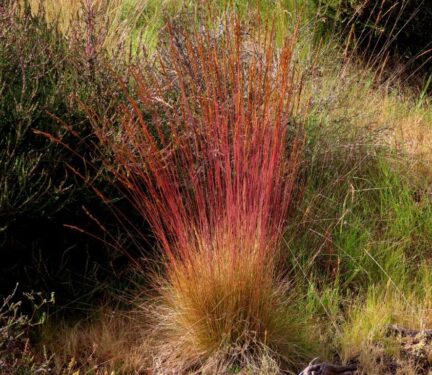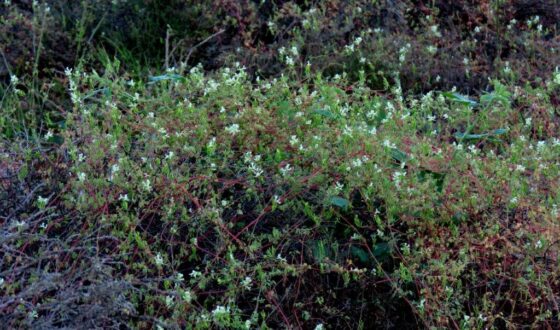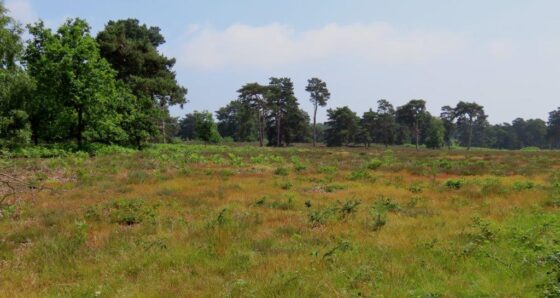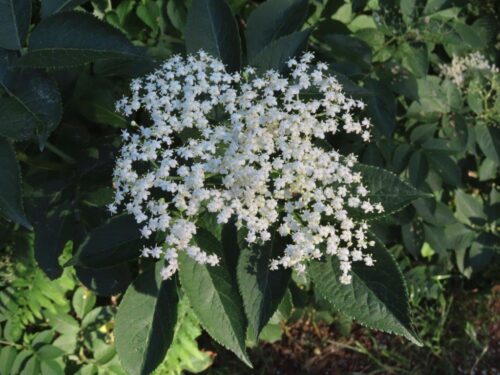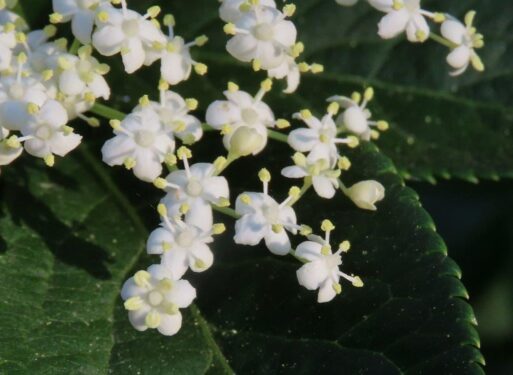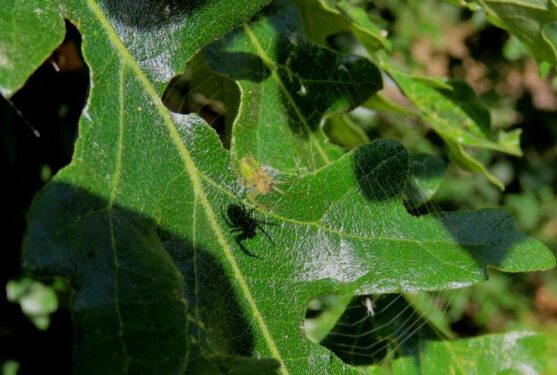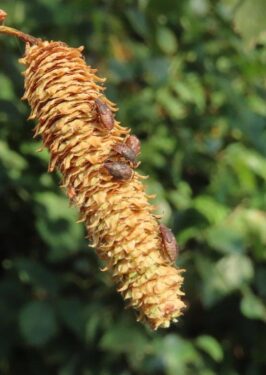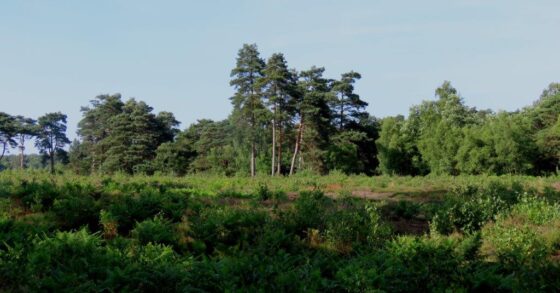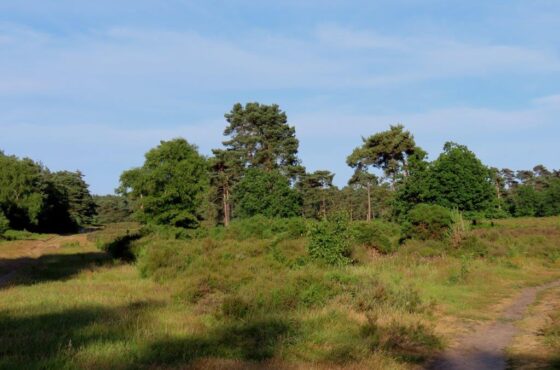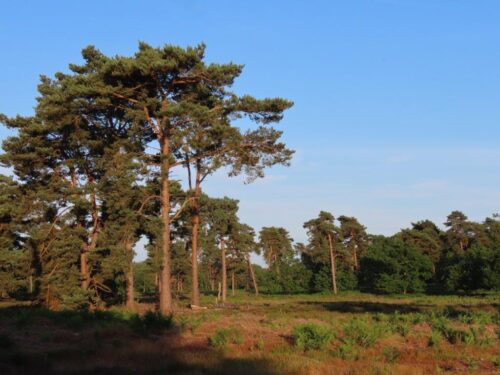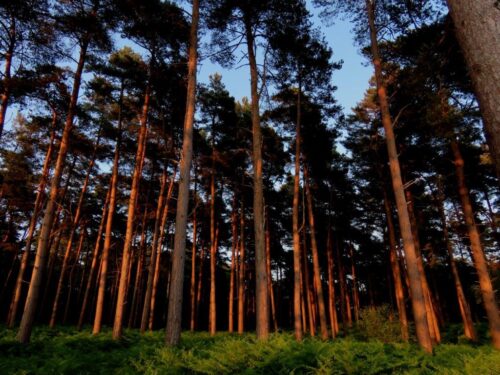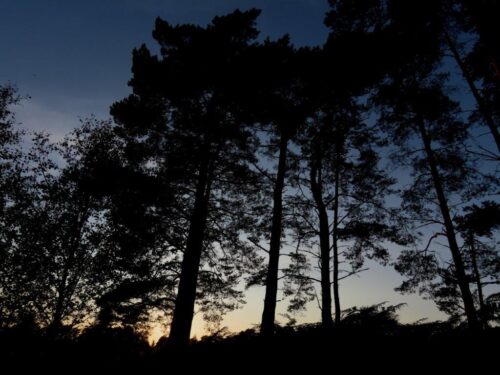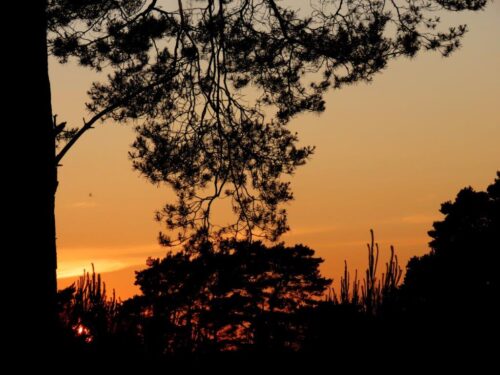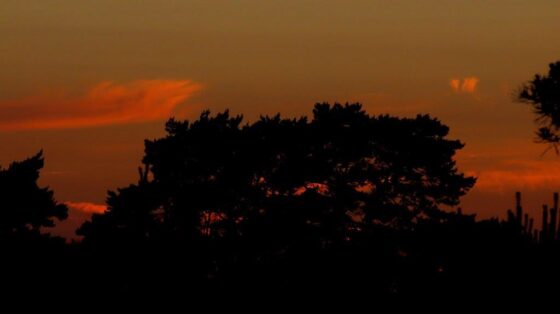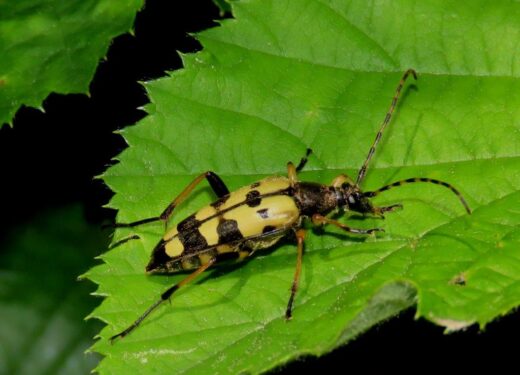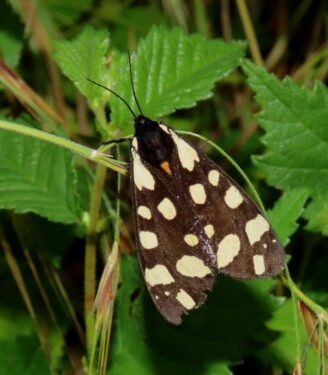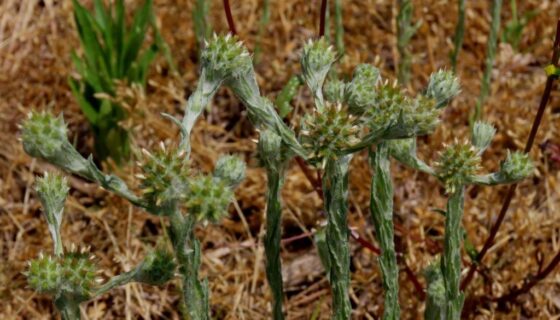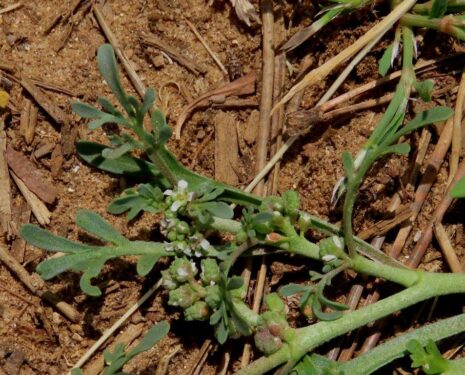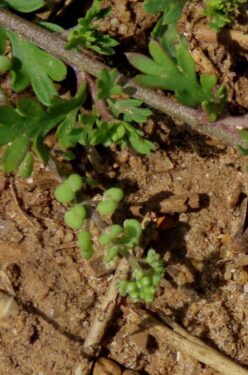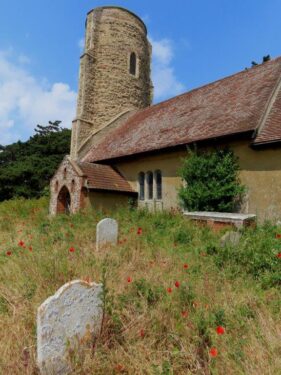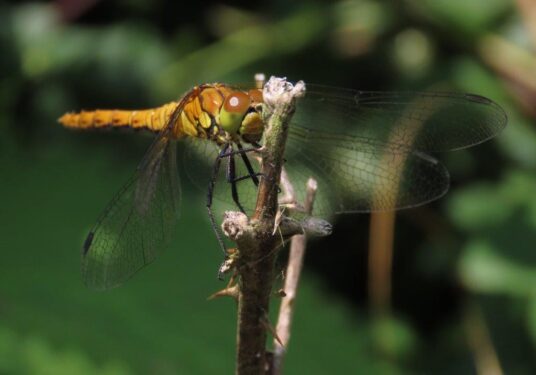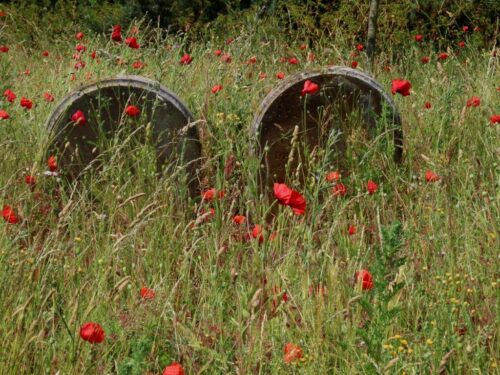A two-part #WildEssex trip across the border into the Deben Peninsula started after lunch at Sutton Heath in sweltering sunshine, albeit with a brisk, warm breeze.
After the Spring drought, the heath was looking a bit frazzled, although Sand Spurrey, Sand Sedge and Heath Groundsel were still flowering well in places.
Even as we gathered in the car park, a male Yellowhammer serenaded us atop a tree, and shortly thereafter its place was taken by the first of several singing Woodlarks. But other heathland birds save for a couple of Stonechats were keeping out of the heat, and most sound came from Chaffinches, Chiffchaffs and Goldcrests from within the shade of the woods.
In common with seemingly everywhere else in the south-east this Spring, insects were rather sparse, with just a few Small Heaths and a Red Admiral being the butterfly haul, along with Clouded Buff and Cinnabar moths, both typical day-flyers.
A splendid, shining jewel of a Green Tiger-beetle paused long enough on the path for most to see it …
… while the most impressive insect numbers came from the vast hordes of Sand Wasps, more than I have ever seen at one time before, many carrying paralysed caterpillars back to their nests.
Moving down to the coast at Shingle Street, the hat of the heath ameliorated by a breeze from the sea, the skeletal landscape, more moonscape than habitat, was (as ever) dramatic.
Newer, seaward shingle deposits were colonised by Sea Kale, Yellow Horned-poppy, Sea Beet, Great Lettuce and very heavily droughted, barely flowering Sea Campion …
… while the smorgasbord of botanical edibility was crowned by the best display of flowering Sea Pea I have seen for many a year.
Further inland, on the stabilised shingle, Viper’s Bugloss provided vivid splashes of blue, along with pink Red Valerian, Biting (yellow) and White Stonecrops and purple Nodding Thistle …
… and isolated, wind- and salt-sculpted Wild Privet bushes, now in full, fragrant bloom.
Meadow Pipits scurried around at our feet, and Herring Gulls and Common Terns were around the offshore shingle islands that form the distal tip of Orfordness.
Returning to the Sandling heaths, Upper Hollesley Common is somewhat more diverse botanically than Sutton Heath, with Bell Heather already flowering among what will become the August glory of Common Heather.
Scrambling through the heathers were the filigree adornments of Climbing Corydalis, and the newly minted stems of Wavy Hair-grass were putting on an almost psychedelic show.
A pair of Mistle Thrushes hopped around one of the clearings, and a few invertebrates among the Elder (in full, late flower, a sign of the season), Holly and Silver Birch included Birch Catkin-bugs and a Cucumber Spider, typically hanging underneath its horizontal web.
Then a couple hours off, before the evening session began in thankfully cooling temperatures, enough to bring at least three Woodlarks into full song.
As dusk started to enfold us, the songs of Dartford Warblers, Chaffinches and a Yellowhammer continued almost until 10PM, this being two days short of the longest day.
Indeed the day songs overlapped with the first tentative churrings from the Nightjars, the main reason for being here, which started at 09.40. But after 10.00 the real display commenced: perhaps a dozen churring males, some very close, spectacular wing cracks, and several excellent flypasts on moth-like wings. Aside from distant traffic, the only other sound a hooting Tawny Owl, we headed back across the tranquil midsummer heath with just enough light not to need torches.
And finally, just a few snippets from my morning before the walk, to revisit the areas, check the routes, and lose myself in Nature: Yellow-and-Black Longhorn-beetle and Cream-spot Tiger-moth…
… sandy arable fields with rich marginal floras, including Common Cudweed and both Common and Lesser Swinecress (note the different seed-pod shapes) …
… and Ramsholt churchyard, a rich tapestry of colour and life, a haven for the things that make the world go round, and a beacon of what all churches, without exception, should aspire to: ‘God’s Acre’, refuge for Nature as well as the Soul, for All Creatures Great and Small.
